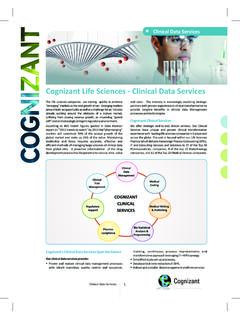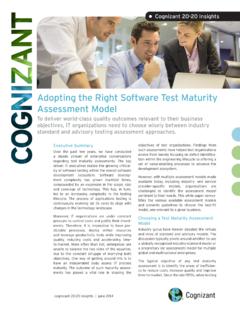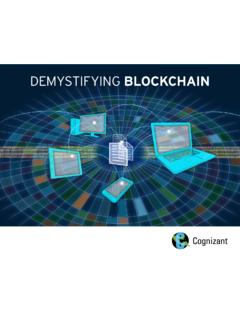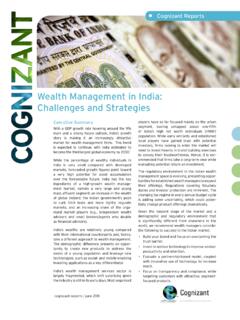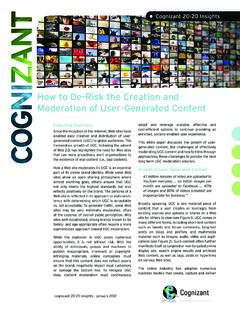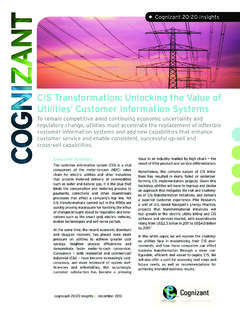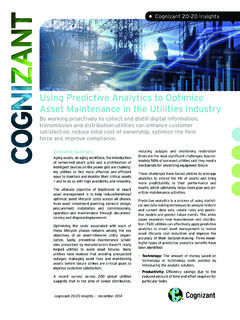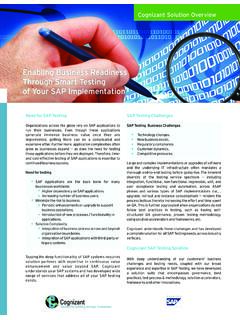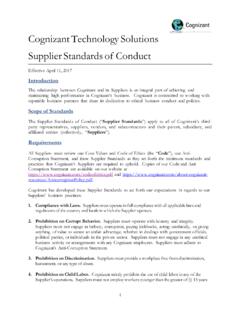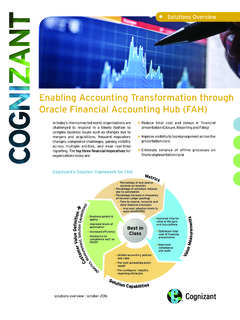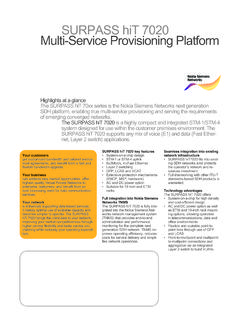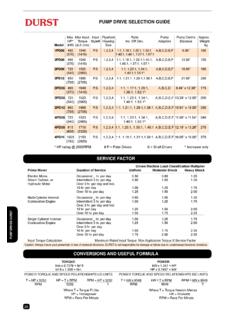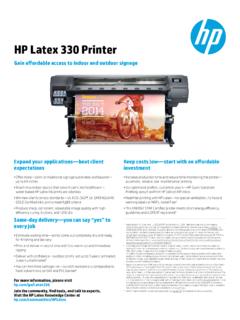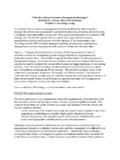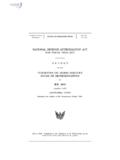Transcription of Source-to-Pay: Advancing from Pure Cost …
1 Cognizant 20-20 Insights Source-to-Pay: Advancing from pure cost optimization to Value generation To turbo-charge business value from sourcing and procurement functions, organizations must transcend foundational approaches . focusing instead on refining strategies, heightening efficiencies and delivering more value across S2P operations, to internal customers, and throughout the extended supply chain. Executive Summary The State of S2P. If the pundits are to be believed, 80% of busi- Our assessment of sourcing and procurement nesses treat their sourcing, procurement and activities at organizations with global S2P opera- payment (S2P) processes as non-core functions, tions reveals a host of challenges in six primary with the possible exception being the sourcing of categories: direct materials. As a result, S2P does not receive the attention, much less the capital and strategic Strategy: Inadequate S2P strategies (category management, sourcing strategy, supply risk focus, it deserves.)
2 Planning) at an enterprise level. There are also external forces at play ongoing Intelligence: A lack of market savvy concerning global economic uncertainty and a dearth of S2P products, technology advancements, new talent at mid- to senior-management levels, for suppliers (inadequate supplier outreach example that exacerbate the problem. These capability) and global commodity indices. issues, plus the lack of enterprise-level S2P opti- mization, directly impact gross margins and Policy and process: Shortcomings in the areas of spend management, cost modeling, working trigger a variety of other operational challenges. capital management, material procurement (See Figure 1, next page.). planning (including demand aggregation) and This white paper explores in detail the challenges contract compliance. facing sourcing and procurement heads, as well Accountability: Failure to establish SLAs and as specific levers/strategies that can be incor- controls through S2P KPIs.
3 Porated to help overcome these roadblocks and enable purchasing teams to achieve excellence in Structure: S2P organizations struggle to find the best structure and model decentral- sourcing, procurement and payment. By adopt- ized, centralized or center-led. While structure ing the new S2P operating model described here, alignment can still be attained, tribal category leaders will be equipped to deliver the highest knowledge remains with a few experts and level of efficiency in S2P operations, along with overall, inadequate sourcing skills is a recurrent more value to internal customers and the extend- problem. ed supply chain. cognizant 20-20 insights | december 2015. Challenges Facing Sourcing and Procurement Inefficient supplier management practices Maverick, spot purchases, Sub-optimal price contract non-compliance discovery of goods &. services procured Single-sourcing, Poor service levels preferential supplier treatment Inconsistent & incomplete catalogue & specifications cost overruns Lack of control &.
4 Accountability Broken procurement planning processes Figure 1. Technology: The inability to strike the right Realizing Savings Through Basic balance between process efficiency and S2P Processes advanced technology (catalogue manage- ment, supplier relationship management S2P SAVINGS POTENTIAL. [SRM], e-procurement, reverse auction, P2P. buying channel, spend analytics) invariably leads to poor or no ROI on S2P technology SOURCING. investments the result of bad choices and favoring automation over value creation.. 40-60%. Strategic Organizations with semi-mature S2P practic- sourcing es have managed to plug the savings leaks and improve S2P efficiency-related benefits by imple- menting the fundamentals of S2P processes (see 15-25% 100%. External TOTAL POTENTIAL. Figure 2). This includes ensuring compliance, compliance SAVINGS. institutionalizing approval-based P2P workflows, deploying foundational content management and 15-25%.
5 Internal embracing spend analytics practices. However, to compliance move the needle beyond savings to value creation, S2P functions must up the ante on other critical 10-15%. Operating aspects that can unearth larger opportunities efficiency and enable them to systematically capitalize on each. Avenues that have the potential to demon- PROCURE-TO-PAY. strate greater value to the business include: Source: Everest Supply risk management: This remains Figure 2. an evolving practice ( , supplier audits). within many organizations, which makes cognizant 20-20 insights 2. Category Sourcing Can Result in sense given that other forms Risk management of risks natural disasters, should not be Significant Savings political and economic events, contracting, legal, operational conducted in Facilities 4-8%. and financial are not collective- isolation; instead, HR related 6-20% ly assessed.
6 Moving from a quali- it needs to be tative approach to a continuous, IT/telecom 6-25% fact-/data-based quantitative embedded within Marketing/sales risk evaluation is among the key the core source- products 3-23% capabilities that can differentiate to-contract and an organization's S2P function in Marketing/sales services 6-20% terms of strategic value creation. procure-to-pay Risk management should not be processes to MRO supplies 8-20% conducted in isolation; instead, minimize supply- 7-20% it needs to be embedded within Office supplies the core source-to-contract exposure risks. Professional services 7-20% (S2C) and procure-to-pay (P2P) processes to minimize supply-exposure risks. Third-party 6-22%. logistics Category sourcing strategy: This involves defining sourcing groups and specifying Travel related 8-23 %. strategies (balancing business goals, require- Utilities 5-15% ments, buyer dynamics and supply market complexity) for direct and indirect services and AVERAGE SAVINGS projects potentially resulting in a range of Source: Ariba savings opportunities.
7 (See Figure 3.). Figure 3. Finding the Right Buying Channel LEVEL 1. CATALOGUE. LEVEL 2 LEVEL 3. 2. #. Building Contractors Heating Cooling Electrical Installations Ventilation Facility Management Water & sewer BUYING CHANNELS. Indoor Infrastructure Road maintenance Security REQUISITION. Office Equipment Furniture Catalogue Special request IT consulting Online contract OCR. Consulting E-mail/phone/FAX/verbal Non-OCR. Management advisory Professional Services Financial consulting Financial INVOICE. Auditing X. Chemicals T&E card Scanned invoice Consumables E-Invoice (EDI) Paper invoice Semi-finished steel MRO Self-billing Components Tools & Spare Parts Electrical engines PURCHASE. Assembly, automation, Non-PO Automatically generated PO. Capital grinding, etc. Hands-on PO Scheduled PO. Production equipment Equipment Measurement, testing, packing, etc. Import/export duty, Air, Rail, Road & Sea costs for brokerage Logistics Transport, Express Parcels Warehousing services Etc.
8 Figure 4. cognizant 20-20 insights 3. Buying channel strategy: Finding the optimal predict changes in commodity prices. Likewise, procurement channel is critical taking into they must use analytics to access supply risks account different dynamics in terms of user and compliance data assimilated from internal efficiency (lowest transaction costs, reduced and external sources, using advanced Decision complexity of IT solution, etc.), control and Tree-based models that enable category visibility (spend information, compliance to managers to establish a robust risk profile of contracts and specifications) and ease of their critical parts/services and the associated use (easy ordering, quick delivery and easy savings. The collective multiple data sources invoicing). (See Figure 4, previous page.) will form the building blocks for a 360-degree view of the category covering all aspects, such Supply chain financing: This can be accom- as risks; TCO and savings; product/service plished through multiple techniques, such technology advancements/maturity; quality.
9 As vendor-managed inventory (VMI) and compliance, and supplier performance . buyer-led credit programs for suppliers. Using resulting in negotiation scenarios informed by a combination of payment terms (early vs. late). robust analytical engines. and associated rebates, invoice consolidation and P2P automation can deliver additional cost Evolving supplier partnerships: Based on the savings. principles of core competence, S2P leaders will recognize that there is much to be gained from Global shared service: This operating model their suppliers. For example, suppliers are more is responsible for defining and executing knowledgeable on key technological advance- on sourcing strategy, P2P transactions ( , ments in the product/services they provide . post-purchase requests), S2P analytics and compelling category local operations, including sourcing support, managers to evaluate By bringing in outside- purchase requisitions, spot buys and contract them not merely on in views on technology.
10 Execution. innovation, but also Given these dimensions of an S2P function and on how the suppliers owning auxiliary their varying impacts on shaping the maturity of integrate their own activities around operations, it is evident that a chief purchasing p r o d u c t /s e r v i c e the product/service;. officer's task is arguably a multifaceted one. From lifecycle activities managing end users and the plant head's expec- with customers' S2P using IT effectively;. tations ( , complex goods and service demands, activities. In addition and participating in delivery pressures), to maintaining a persistent to staying price-com- joint product design/. cost -containment focus, to conforming to sus- petitive and remain tainability requirements while balancing supply a provider of choice, development of risk, the CPO's role can be mind-boggling and suppliers will move innovative commercial complicated, particularly when it comes to play- up the value chain models involving variable ing catch-up with long-term challenges and S2P not just by catering trends and staying ahead of the competition.
